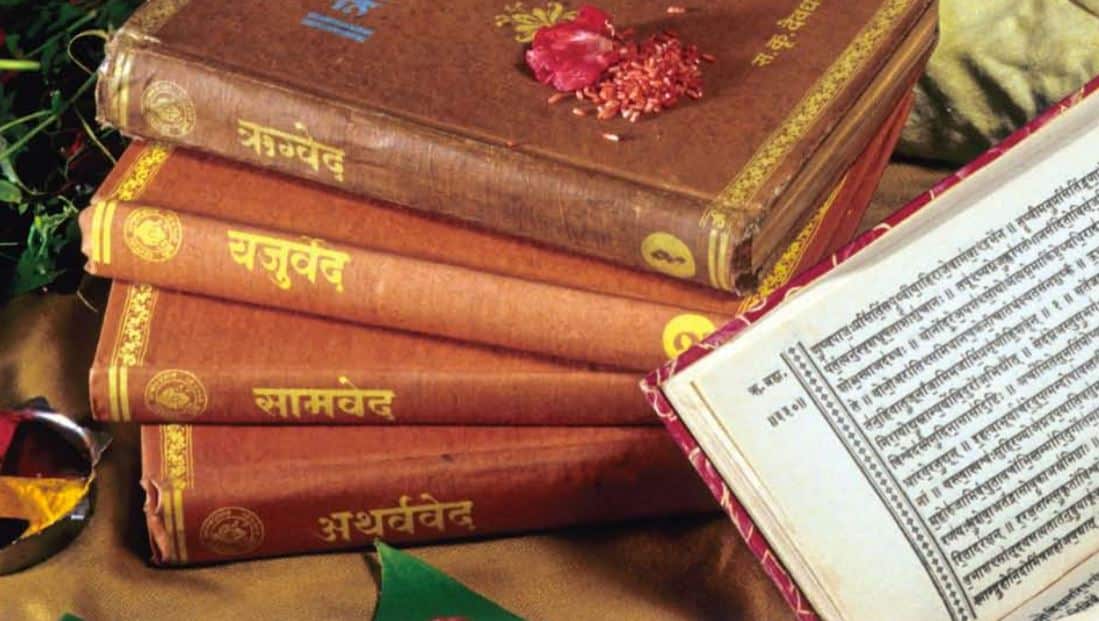In our posts we talk so much about the ancient Vedas, we refer to them, but there is no place there to elaborate on the meaning of this mysterious and exotic word: Veda …
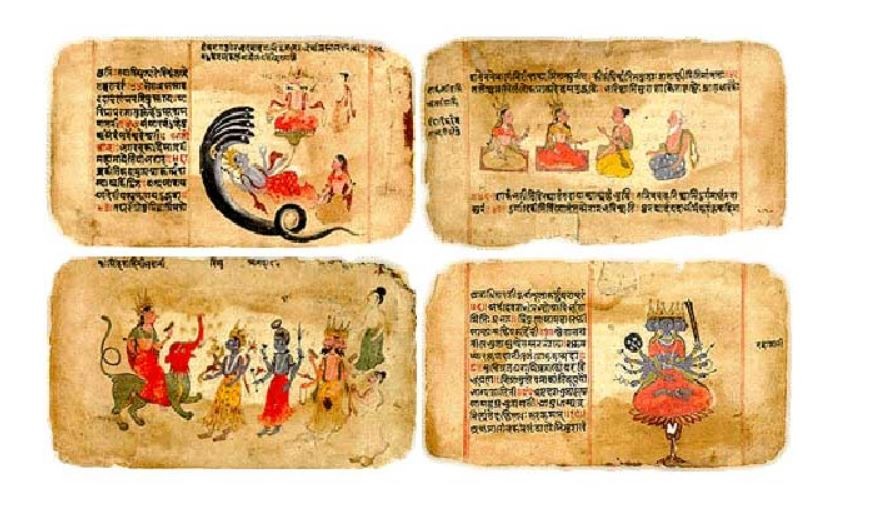
Meaning of the word Veda
The word Veda means knowledge, revelation. The knowledge that is eternal, never changes, the truth that embraces everything. It is an authentic knowledge on which human development is built. Vedic knowledge includes the knowledge of all physical and metaphysical fields.
Vedic knowledge gives a clear view of reality. Knowledge does not mean data you obtain through rote learning, so you can repeat it. Real knowledge is possessed by the ones, who are transformed by it.
Their birth
The Vedas have existed since the beginning of time. This knowledge was given by God, to God’s creatures. In the beginning, it spread from mouth to mouth, because the creatures (not only humans, but other intelligent life forms exist!) in the universe had such a high capacity of memory and level of intelligence that they could memorize it by hearing it for the first time. About 5000 years ago, at the dawn of the present age (Kali Yuga, Iron age), Vyasadeva put down this knowledge systematically in a written form to preserve it and structured in a way that it could be more easily taken in by the people of this era. He divided the one Veda into 4 parts. Vyasadeva dictated the Vedas to Ganesh, the elephant-headed demigod, who actually put it down in writing.
Structure
From a superficial point of view, Vedic writings may seem to be unsystematic or even contradictory, but we can easily go beyond this by understanding their structure:
The construction of the Vedic scriptures is comparable to a staircase of many steps, and each step has its own sacred writings belonging to it. The Vedic scriptures describe the desired goal and the way leading to it. They simply encourage you to go to the next step on the staircase.
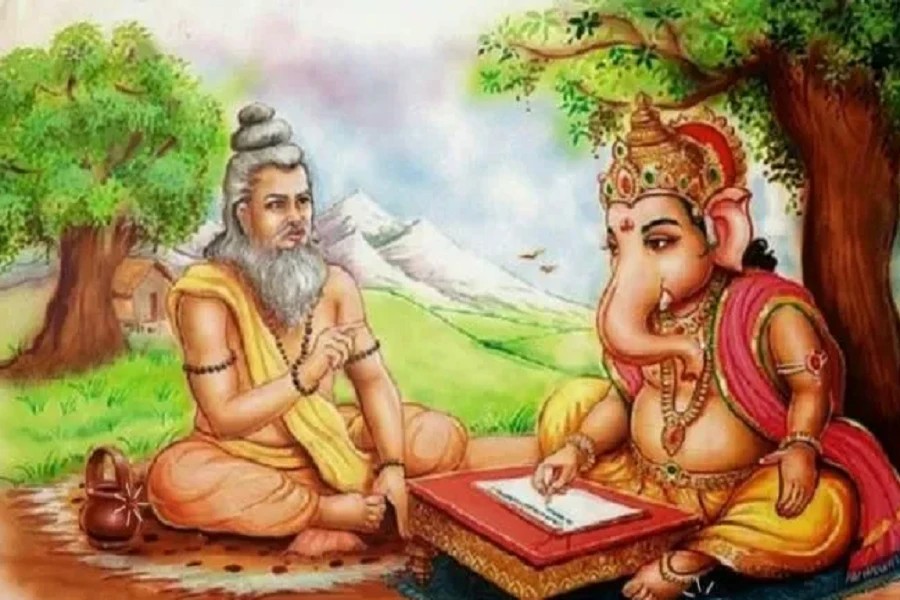
Types of Sacred Scriptures
The Vedas are a vast collection of texts, and in terms of their content they include not only religious teachings, but also the connections of the world in various aspects, the depths of human existence, and all aspects of life are scientifically presented. Its language is Sanskrit.
The four Vedas are shruti, that is, divine revelation. The smritis, also known as the fifth, are the puranas and ithasas (epics). These are divine inspirations, God’s words conveyed by holy persons. The Vedic literature contains many types of writings besides the 4+1 Vedas, but we now put aside the dry enumeration and classification of these.
94% of the Vedas have been lost by now. However, the remaining part is so vast that a human lifetime would not be enough to study it. Due to the divine arrangement, “fortunately” the very parts that we need are left.
When we talk about the books of the Vedas, we basically mean the following four Vedas:
- Rigveda – a collection of hymns and prayers
- Samaveda – a collection of songs. They contain a lot of mantras, as well as strict rules on how to sing these mantras according to mystical vibrations.
- Yajurveda – describes the execution of sacrificial formulas and rituals
- Atharvaveda – magical formulas. They describe many types of worship and invocation. In a broader sense, many more material knowledge are included, such as Ayurveda (means of medicine and health preservation).
The purpose and themes of the Vedas
The Vedas focus on the goals in human life: dharma (truth and duty), arta (material goods), kama (satisfying desires), and moksha (liberation from material bonds). The divine forces control the universe, and the Vedas help to establish contact with them, as well as with the Absolute truth, which is God.
All these teachings encourage the human being to understand that he is not an independent entity, but part of a universal whole. Our material world is governed by demigods, divine forces, who are God’s “subordinates.” If you come into contact with these divine forces through the proper ritual, you will gain material benefit and experience some peace and harmony. But the ultimate goal is higher than these semi-divine powers: Absolute truth, God.
The reader of Vedic teachings understands the causes of various human reactions and aspirations. Thus, he is consciously and constantly evolving, and at the same time he understands the phenomena around him and sees the correlations.
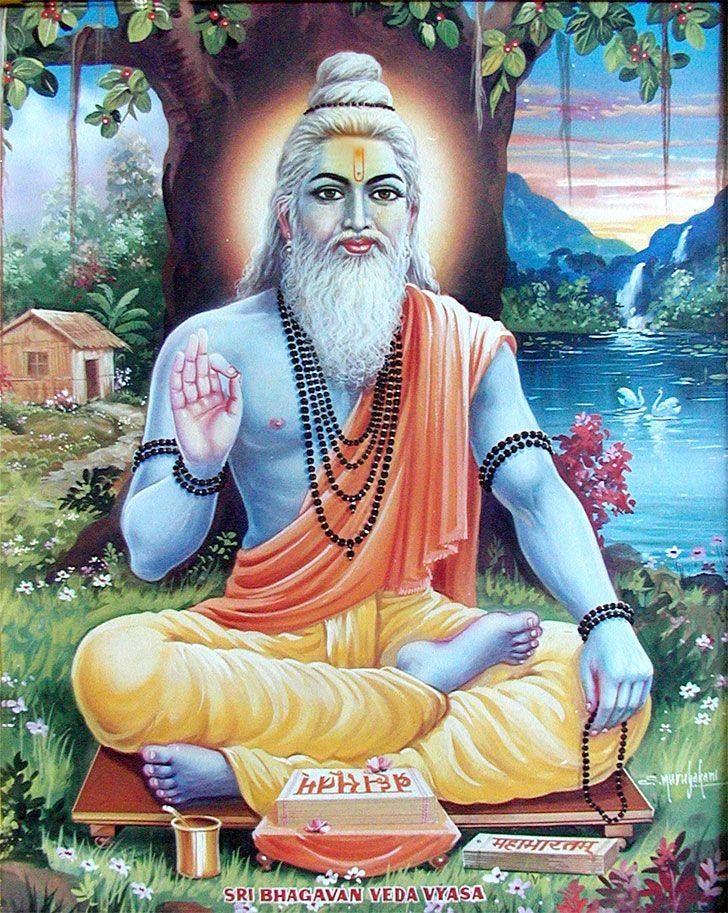
Vedas in the modern world
The teachings of the ancient Vedas are still extremely relevant and applicable in modern life.
They are based on a deep understanding of the drives of human nature and mind, and carry values that can support our self-development processes even in our modern life.
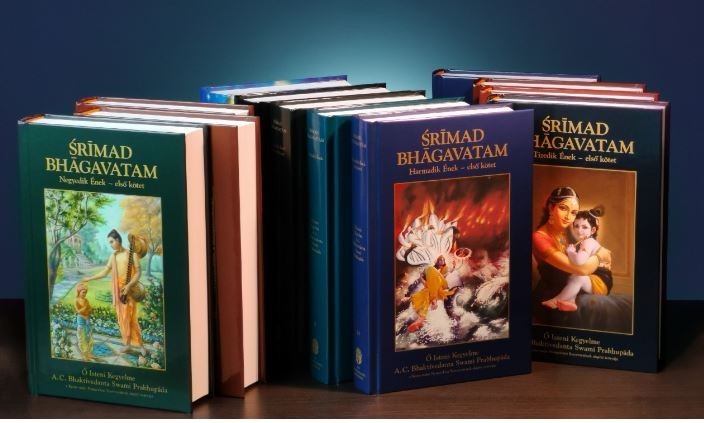
The essence of the Vedas
Our short little human lifetime would not be enough for studying the remaining amount of the Vedas. Fortunately, there is a solution to this: Vyasadeva summarized the essence of the Vedas in the Vedanta sutra. This is a very concise work; in every small sentence a huge amount of knowledge is packed. But to help the fallible man of poor abilities of the Kali age, he wrote the explanation of the Vedanta Sutra, too: it is the Shrimad Bhagavatam. In this book, he teaches us through positive and negative human characters and stories.
The epics (Ramayana-author Valmiki, Mahabharata-author Vyasadeva) also teach us the right way of behaving and seeing things through their stories and characters. Transcendental truths are presented in a more easily readable, digestible form.
One part of the Mahabharata is the Bhagavad Gita, the Hindu “Bible.” In the Gita, Krishna Himself teaches his friend Arjuna to transcendental knowledge.
Interesting facts about the Vedas
- Géza Gárdonyi also knew the Vedic philosophy, believed in reincarnation, and formulated the Bhagavad-Gita with a literal but peculiar poetic image.
- The 30 manuscripts of Rigveda were included in the UNESCO World Heritage Collection in 2007.
- The structure of the whole universe is described precisely in them. Many figures are eventually proven (or will be proven in the future 🙂) by modern science.
- It also describes modern technical solutions such as electric power transmission via cable, the use of fire, sun and wind as energy sources, steam engines, submarines, air transport, spaceships…
- Ganesha accepted the writing task that he would only write until Vyasa was constantly dictating. He used his own tusk as a pen to write.
Summary
The Vedas are not enough to read, but must be put into practice, just like the knowledge of a cookbook. We should not do this at home on our own but accept the help of a qualified mentor. And where can we get that from? The answer is simple: the team of the retreats organized by the Krishna-Valley Guest House is happy to help you!
The Vedas are for you! Use their knowledge in your own life.



